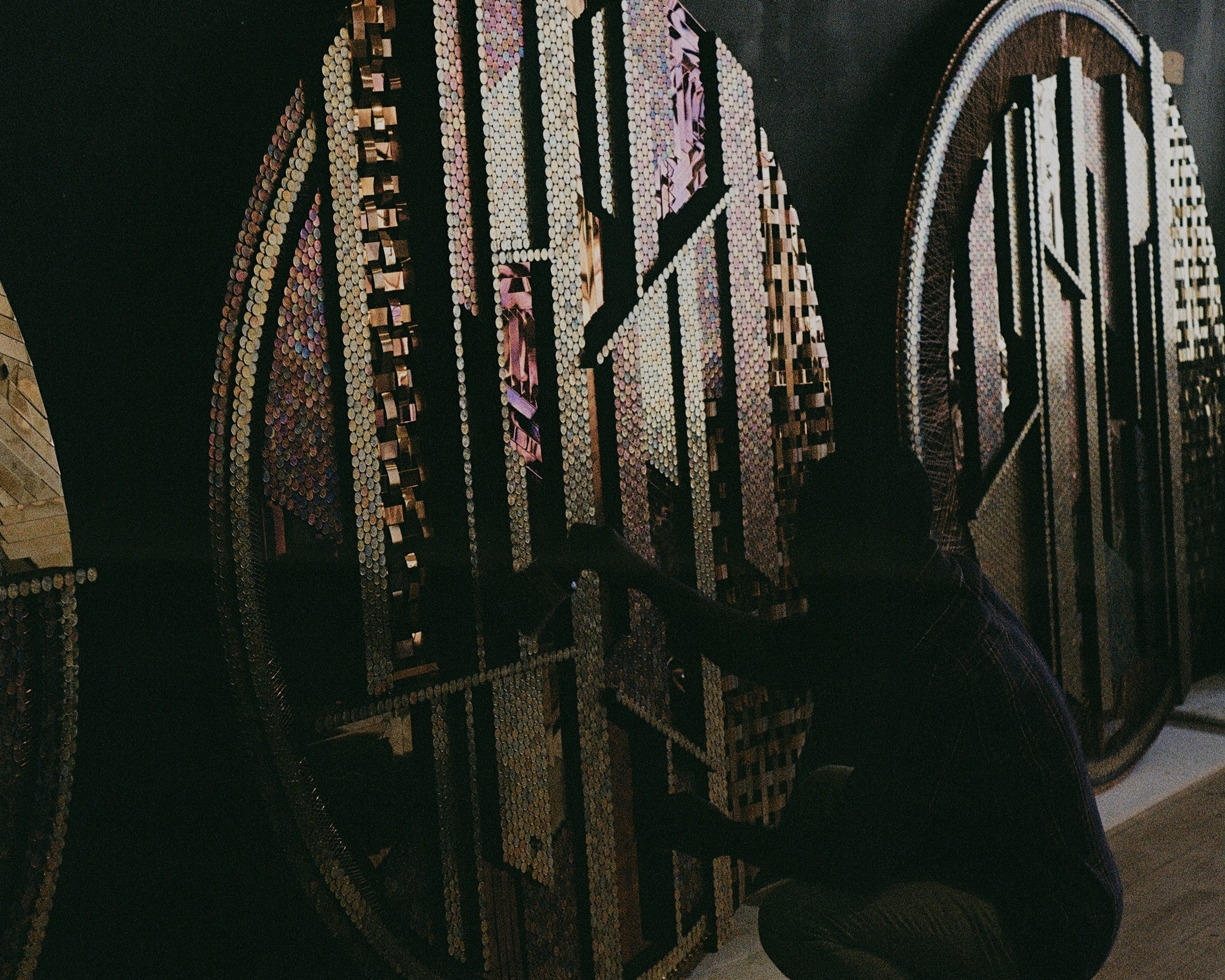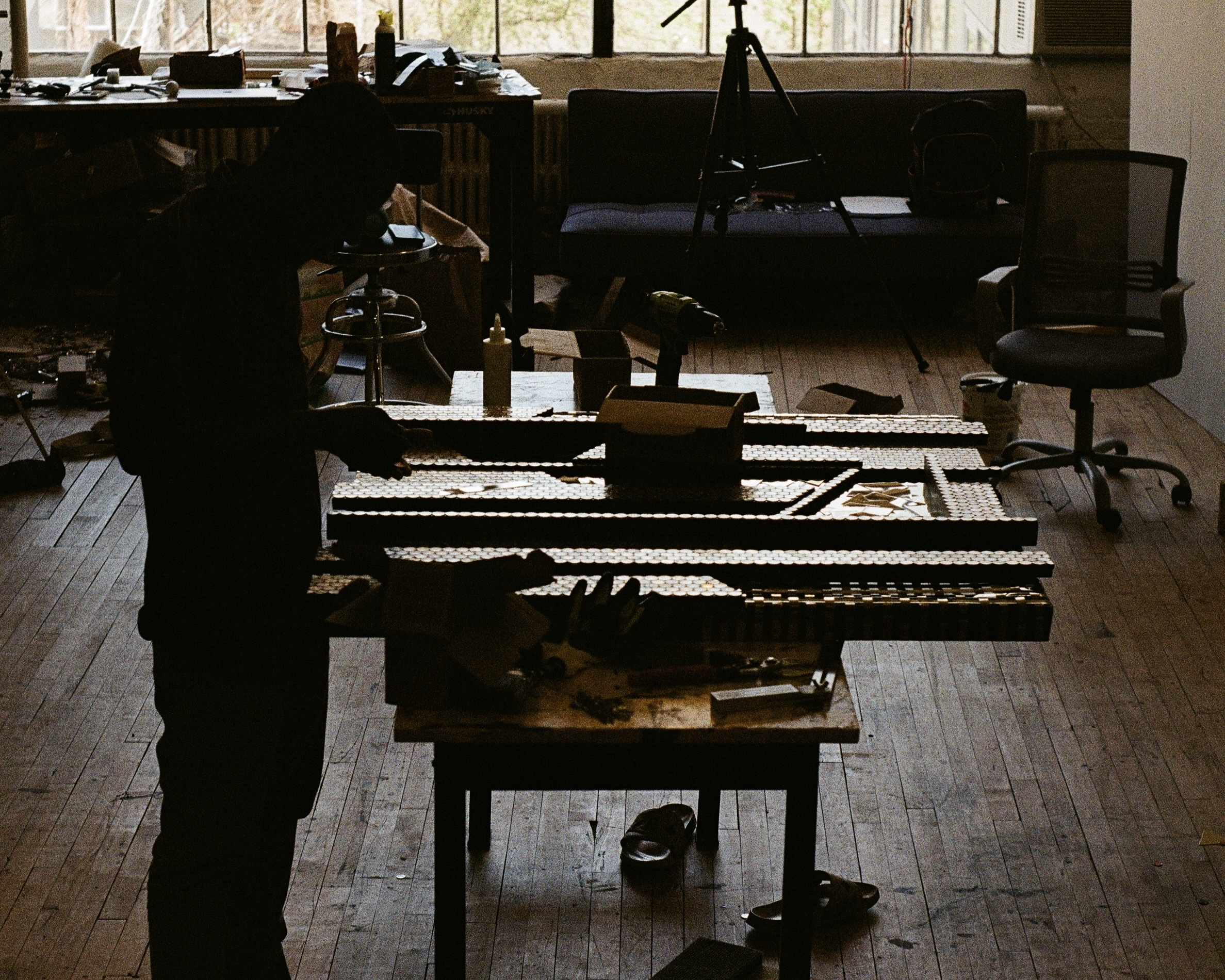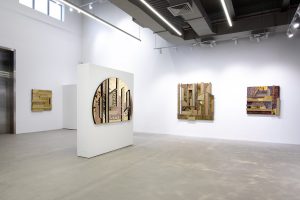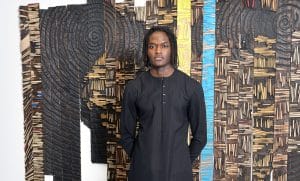
Ever-Present, a group exhibition at Efie Gallery, offers a glimpse at how art from the continent has evolved over time



Born in Kumasi, Ghana (b. 1992) Yaw Owusu received a BFA from Kwame Nkrumah University of Science and Technology (KNUST), the influential research-led and innovative art institution which counts internationally acclaimed artists El Anatsui and Ibrahim Mahama as its alumni. There, Owusu studied sculpture and painting before moving to New York to pursue a Master’s in fine arts at the renowned Pratt Institute of Art. He is the recipient of the prestigious Kuenyehia Art Prize for Contemporary Ghanaian Art (2018) and the Pratt Circle Award and Outstanding Student Award (2020).
Owusu’s cross-disciplinary studies at KNUST and the university’s experimental approach to material and art history influenced Owusu’s desire to venture outside the traditional media of painting, an aspiration which materialised while he was on a journey to the southern coast of Ghana. While at the beach, Owusu stumbled upon coins which had changed color into variant shades of greens, blues and reds. Composed of copper-plated steel, the Pesewa, equivalent to a penny or shilling, was first introduced by the Ghanaian government in 2007, but their value plummeted due to inflation and thus became obsolete. Intrigued by the effect that salt and water induced on the metallic pieces, Owusu negotiated with the Central Bank of Ghana to acquire thousands of pesewa coins. He began to research their history and was bewildered to learn that the coins had not been produced in Ghana, but rather by the Royal Canadian Mint, an offshoot of the Royal Mint of the United Kingdom, Ghana’s former colonial power.
This realization prompted the artist’s use of pesewa coins as a device to interrogate Ghana’s economic and political independence and examine the shifting nature of value. He made his coins undergo organic and chemical processes to convey the impact of trade and time, which alter both the appearance and worth of the currency. Further intrigued by the demarcations of power, he converted them into detailed colourful surfaces resembling cartographies as exemplified in Untitled 2, 2016. The sculptural tapestry is inspired by Owusu’s compiling of archival maps of Ghana which delineated the way the country’s railways were drawn along regions where timber, gold and other natural resources abounded.
His solo exhibitions have spanned galleries in Ghana, the UK, and USA, in addition to a Museum solo exhibition with ICA San Diego in 2022. Institutions such as Christie’s (UK), Sotheby’s Institute (USA), MACAAL (Morocco) have also included his art in group exhibitions. Owusu was awarded the Kuenyehia Art Prize for Contemporary Ghanaian Art in 2018 and the Pratt Institute’s Outstanding Student and Circle Awards in 2020, and has held residencies at Efie Gallery (UAE) and Cope NYC (USA).
In the work of artist Yaw Owusu, old objects of value are reappropriated with a new purpose and narrative.
They scintillate and glimmer like shiny colorful jewels with their abstracted geometric forms, made from found objects, like Ghanaian Pesewas, US Pennies, stainless steel, and wood. Yaw Owusu’s (b. 1992) sculptural installations easily transfix the spectator with their mesmerizing forms and hues that come to life through the shiny texture of the incorporated found objects—objects, as Owusu will explain, which delve into histories of global trade and colonialism to address politics on global and international levels.
Owusu’s installations create beauty and value from objects otherwise considered worthless. Long a signature component of the artist’s work is his incorporation of numerous pieces of loose change known as “pesewa” coins for which he had to negotiate with the Central Bank of Ghana, still the only bank in the country to distribute the pesewa, a bureaucratic process that the artist also refers to through his creative practice. The coins were first introduced in Ghana in 2007 to counteract the country’s inflation. Yet today these small copper coins are largely insignificant in the country and have no value in Ghana’s challenging financial climate that continues to struggle amidst challenges of inflation, which hit its highest in April 2022 since August 2009. For Owusu the valueless coins have another purpose: through his art he hopes to not only create objects of beauty but to address urgent questions surrounding questions of economic and political independence in contemporary Ghana.
Owusu, who obtained his Bachelor’s in Fine Art in Painting from Kwane Nkrumah University of Science and Technology in Kumasi, went on to obtain a Master’s in Fine Art from Pratt Institute in New York, where he is now based. His work has been showed in Accra and London, group exhibitions in New York, Accra, Kumasi, Malibu, Marrakech, Berlin, and Dubai. In 2018 he won the Kuenyehia Prize for Contemporary Art and in 2020 he obtained two awards from Pratt Institute where in 2020 he was also a Visiting Artist Lecture Series Coordinator. Owusu has also given visiting artist lectures at Kwame Nkrumah University of Science and Technology in Technology.
“When I moved to the US, I wanted to try out new materials,” he explains. “It took me back to the coin and to the idea of value. I began studying the penny, the significance of its copper and relationship to mining. I thought again about the transformation of material into value and how the representation of the penny is also the representation of President Lincoln’s head and what that means in terms of liberty and black liberation, particularly coming from Ghana which was once the epicenter for the slave trade.”
A poignant work that is on display as part of Material Earth, a group exhibition staged at Christie’s in London with Efie Gallery, is Determined Measures (2021). A mixed media work, which the artist made in the US from a compilation of stainless steel, copper, US pennies, Ghana pesewas and wood, invites the viewer to consider the effects of the transition of a natural world into a material one due to environmental waste—a principal theme of Material Earth. Through Owusu’s subjects focusing on found objects and repurposed US and Ghanaian coins, the viewer is prompted to consider the urgency in rekindling what is being lost not only in terms of material goods but in terms of culture and community.
“I am now using both steel and copper as well to look at the meaning behind these simple materials and how they are extracted to transform the currency that they create as well as ideas surrounding labor used to create them,” he explains. “At the end of the day, they are just pennies being tossed around. What does it mean to transform these objects into works of art and how in so doing they become new currencies to perpetuate new dialogues to explore new ways of looking at histories?”
Important to the artist’s work is understanding the contributions of blacks and minorities to global trade and society. “How were they reimbursed and compensated,” he asks. “How did their work turn into social engagement?” Owusu went onto the streets of New York to ask these questions and the resulting interactions influenced his work.
“I was thinking about how robust American capitalism is and how it seems like steel. The New York buildings have always been used in the creation of new buildings that keep being built,” he adds. These structures, while made from indestructible materials, could, in a blink of an eye, be destroyed with their surrounding communities erased.
“Using steel, which seems very robust and almost indestructible, has its own limitation,” he adds. Owusu cuts the steel like he would a piece of paper. “I weave the steel and twist it and so that it becomes something very soft that appears not as solid and robust as we think it would be.”
This is the artist’s commentary on the forces that have long governed our world through global commerce, impacting people, nations, culture, and communities.
“I have been influenced by this rapid development or change of society that is either pushing out some people or introducing a new set of people,” he adds. “Black communities or minority communities are always being pushed out.”
Owusu’s glimmering, mesmerizing structures, on view in Material Earth, are an attempt to look again at how power has long inflicted its grip on the global social structures. It is his attempt to re-write the narrative and to give hope and newfound beauty and purpose to all that was seemingly lost.
Read more...

Ever-Present, a group exhibition at Efie Gallery, offers a glimpse at how art from the continent has evolved over time

Ghanaian Artist Yaw Owusu finds inspiration in Dubai for new sculptural installations

How African art is coming of age in Dubai

Dubai Gallery presents Ghanaian contemporary art at Christie’s London

As Christie’s in London collaborates with Efie Gallery to present an exhibition of West African art entitled Material Earth, we talk to the gallery’s co-founder, Kwame Mintah, about why Ghanaian artists in particular are attracting so much attention worldwide

Christie’s are collaborating with Efie Gallery, Dubai, to present an exhibition of three
pioneering Ghanaian artists, El Anatsui, Yaw Owusu, and Isshaq Ismail